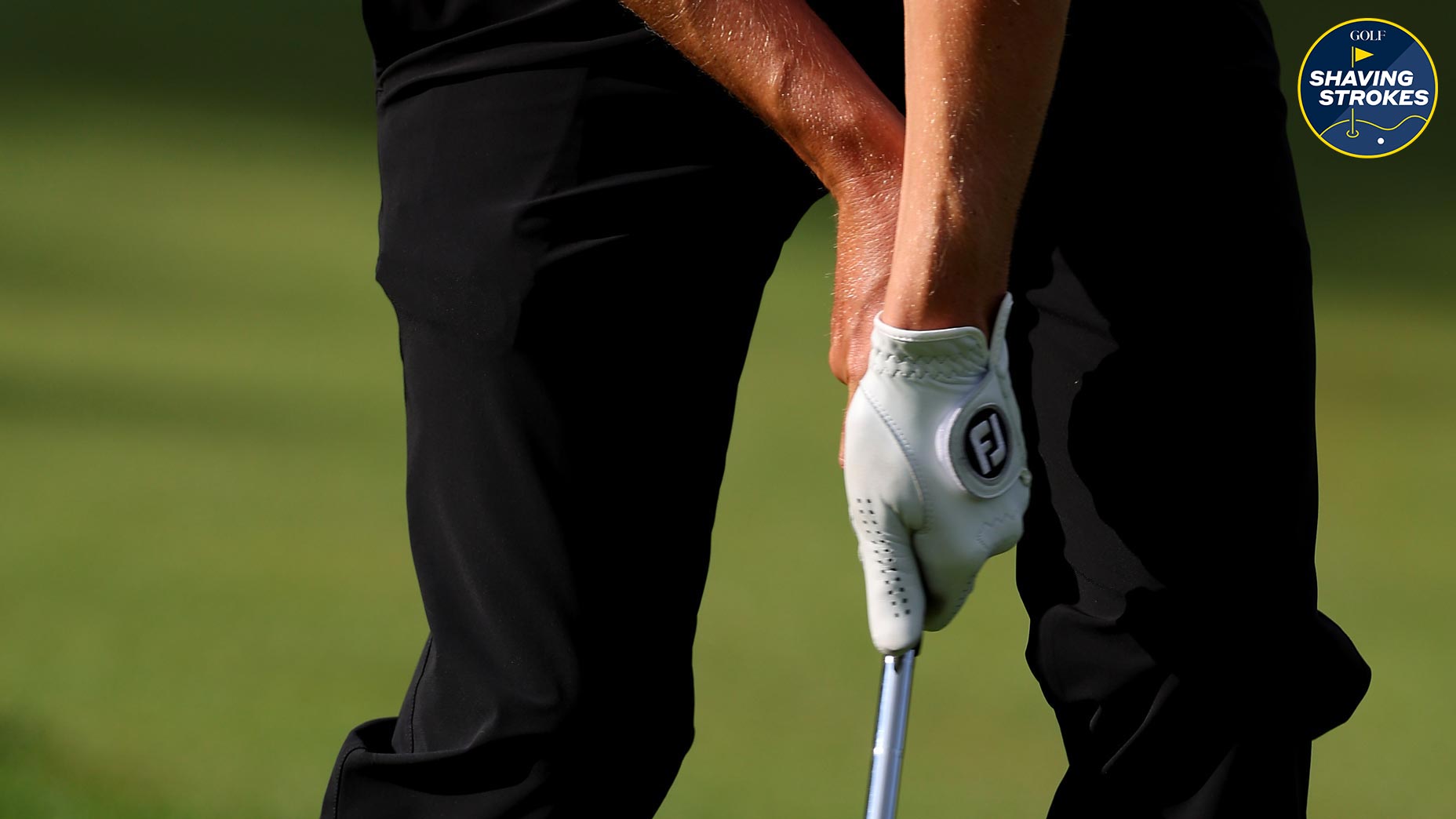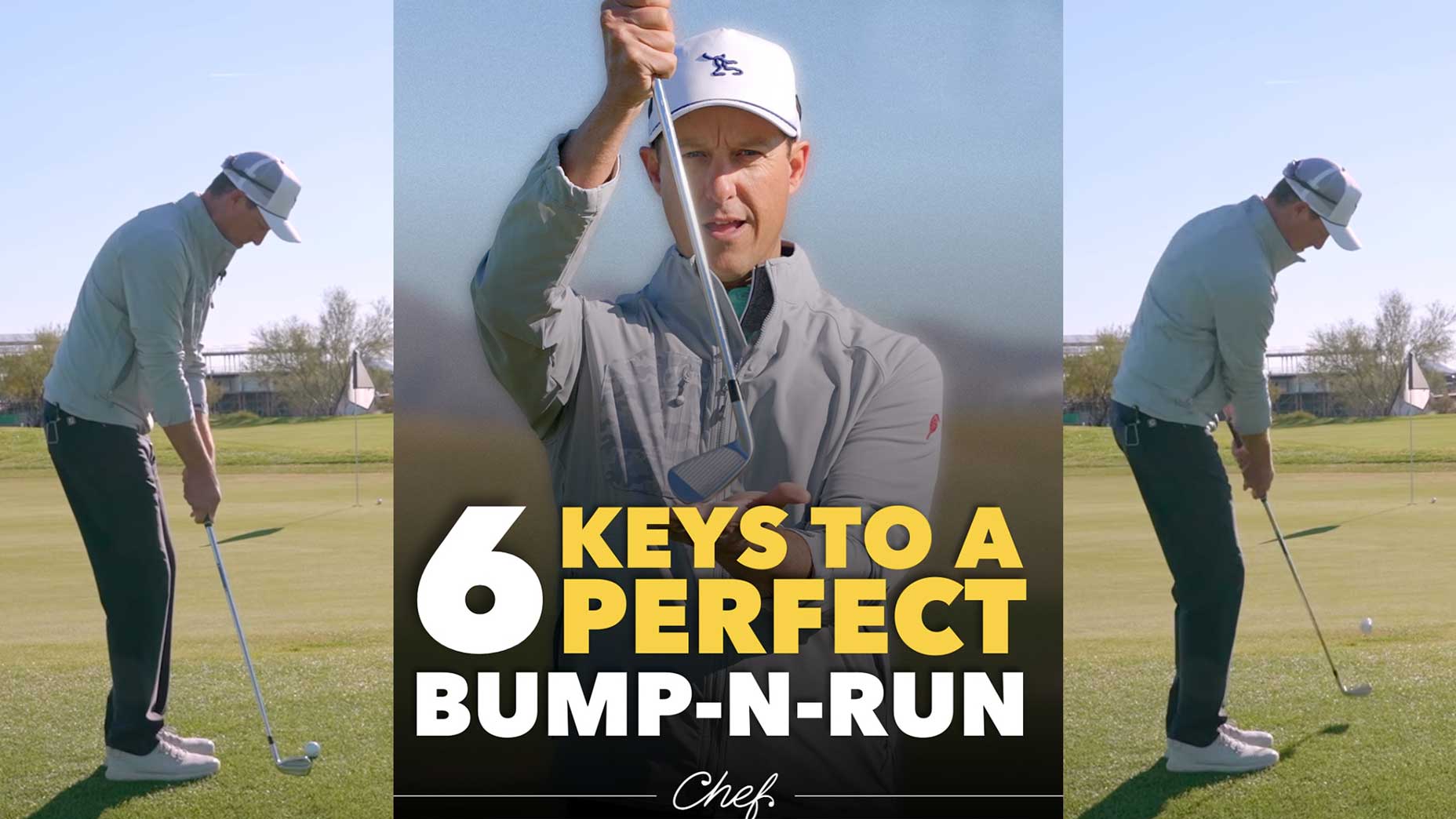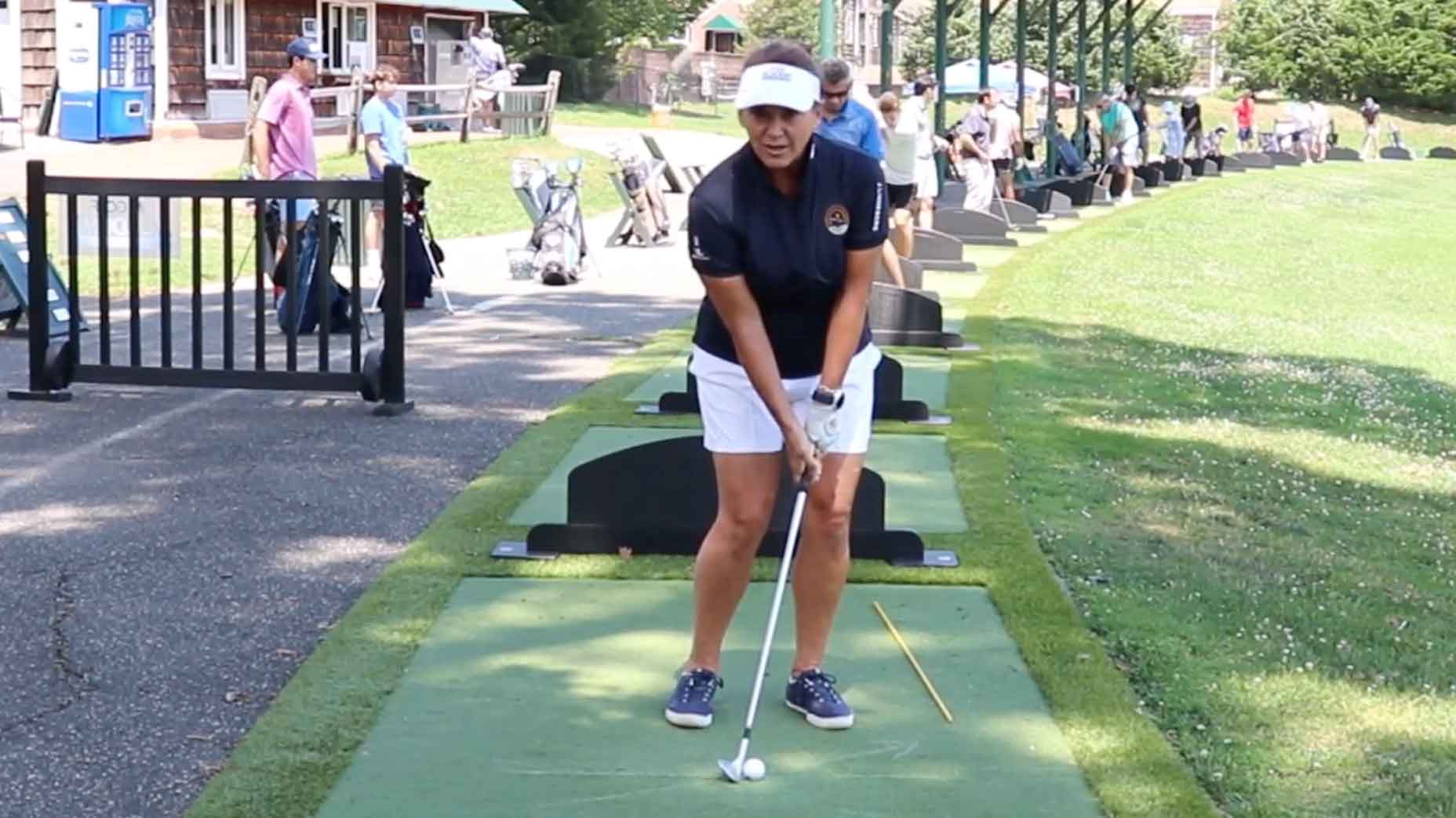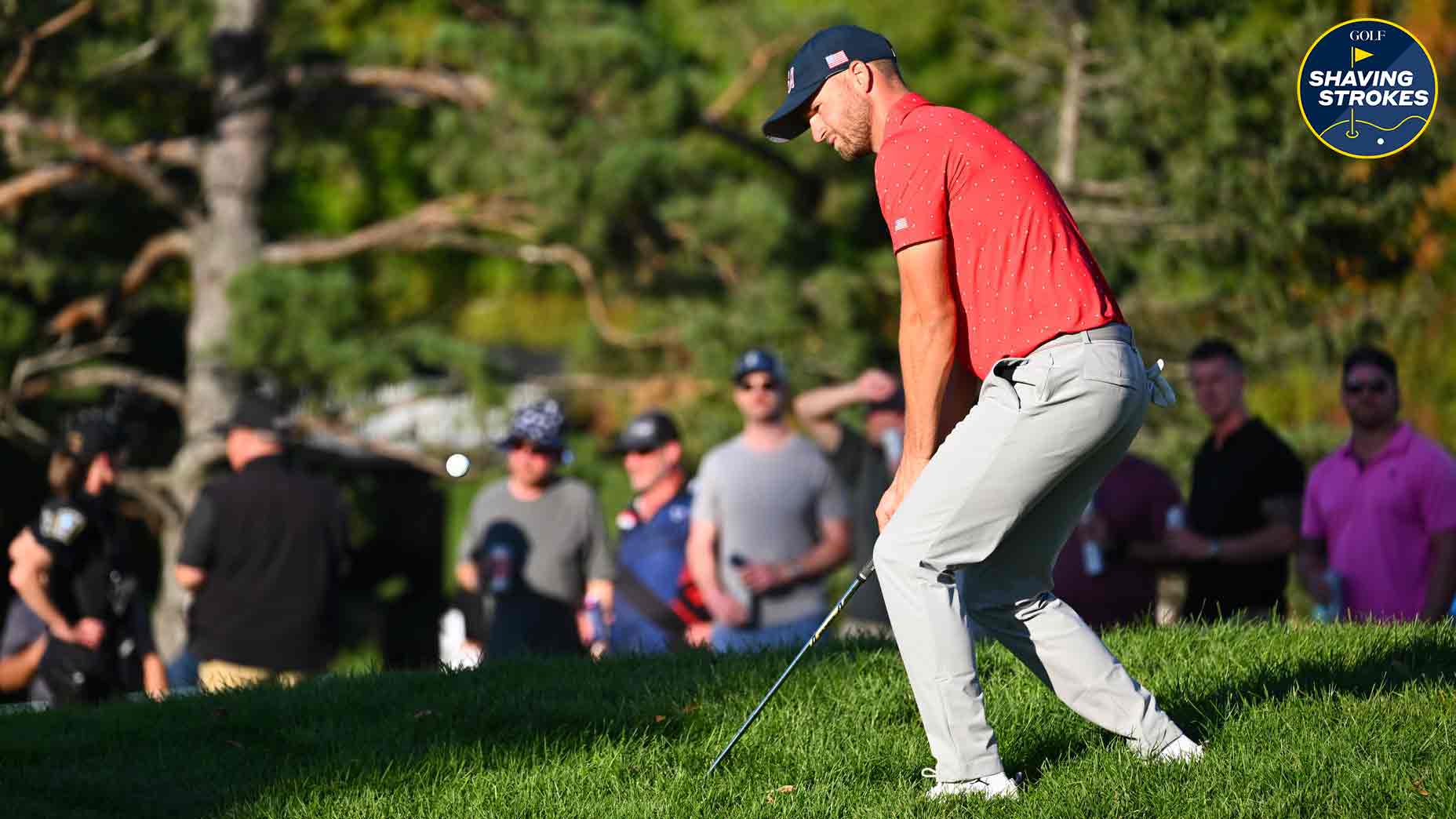For most golfers, improving your chipping is one of the simplest ways to lower your score and build your confidence. First, you need to understand what a chip shot is: It’s a short-game stroke in which the ball carries into the air and then rolls an equal distance (or a slightly longer distance) than it carries. It has a lower ball flight and travels a shorter distance than a chip shot, which means it’s lower-maintenance and more forgiving.
Here’s how to do it right.
1. Be in proper posture
Good golf posture is when you bend forward from the hips and let your arms hang directly below your shoulders. Bowing forward like this creates a space, which in effect pre-sets the path through which your arms and club can swing. For some reason, many golfers get into a more squatty posture, which leads to inconsistent contact.
But good posture is the first step; once you have that, you can adjust your stance to suit the shot.
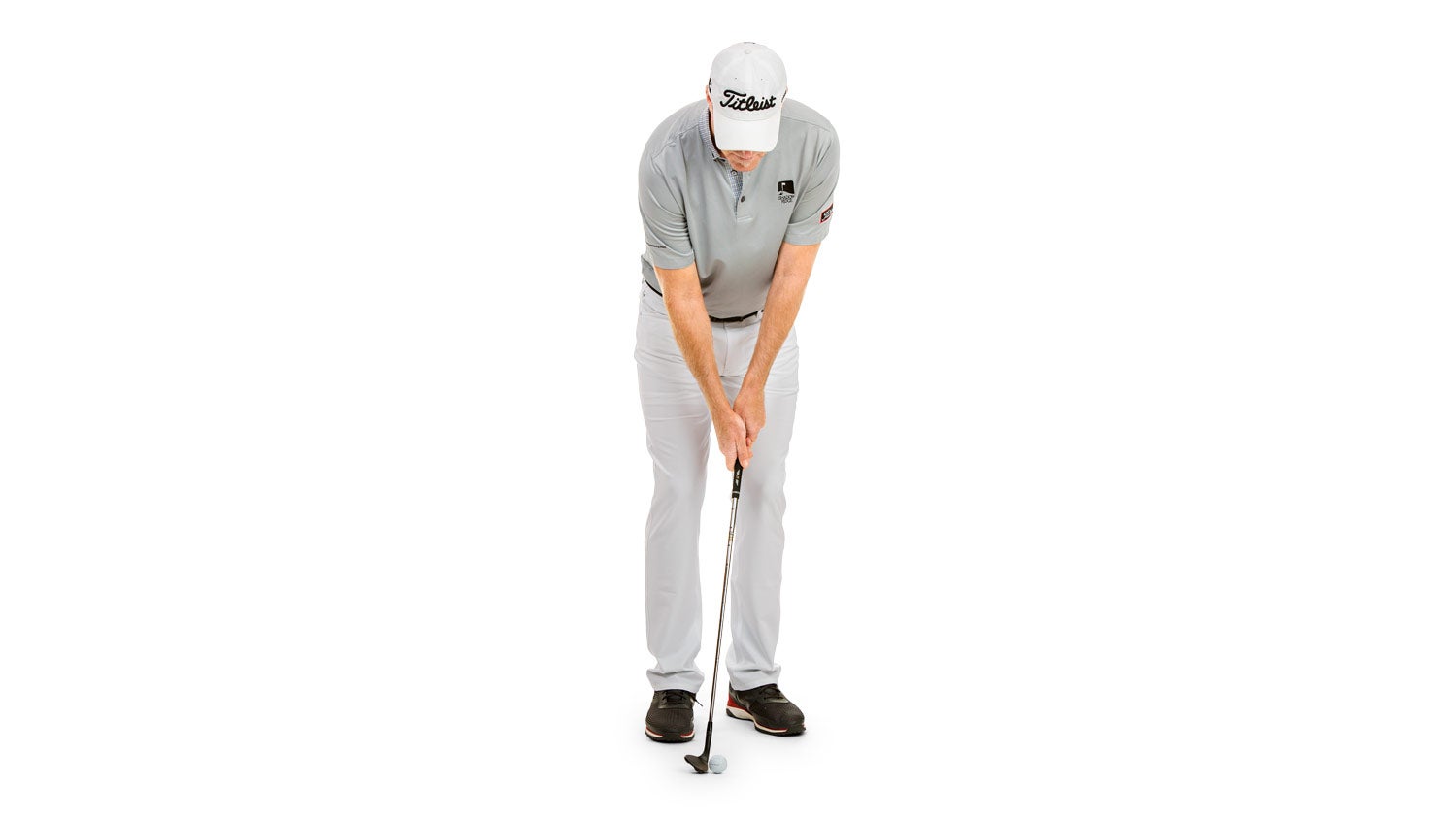
2. Tweak your stance and setup
The putting and chipping motions are both related in that they require shorter stroke motions. Though your posture will remain relatively similar.
To get the desired result with your chipping clubs, make a few small adjustments to your stance and setup:
- Grip lower on the handle (aka, choke down on the club)
- Narrow your stance so your feet are about one clubhead apart
- Move your ball position back slightly
- Lean your shaft and upper body toward the target slightly
These positions, along with a good posture, will put you in position to guarantee the bottom of your stroke bottoms-out after contact for a clean strike.
3. Understand ball-turf interaction
Remember this golden rule: Hit down to make the ball go up. Understanding this bit of physics will help you make the proper stroke. It also explains why it’s so important to keep your upper body tilted toward the target, because it’ll help you make a descending blow.
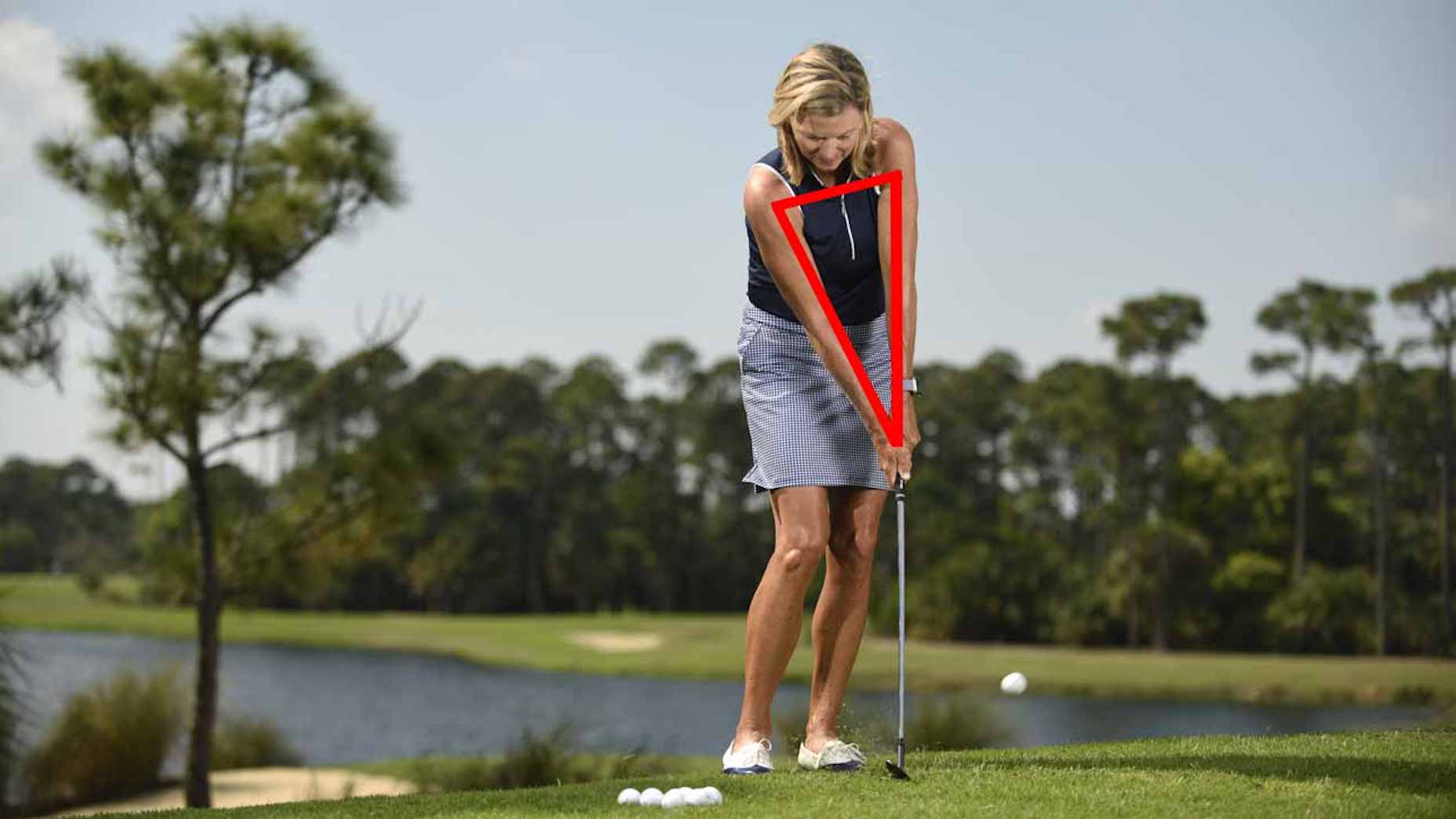
4. Understand your chipping stroke
Like your putting stroke, a good chipping stroke will require your arms to stay relatively intact and quiet during the motion. Think about your arms and shoulders forming a triangle: Your goal is to keep that triangle intact while it moves throughout your motion.
As for the size of the stroke: It varies by person and the distance of the shot. But in most cases the club should always stay below hip level, relatively equal back and through. I do not like to see long chipping strokes, because it can hurt the quality of your contact.
5. Develop your feel
I’ve seen some golfers chip well using a heavily wrist-y motion, and others who chip well using more of a free-flowing move. Like most things in golf, it’s all preference. You should determine what’s best for you based on what works.
One thing that doesn’t work for golfers is tension. It can hurt golfers’ abilities to feel the clubhead, and can prevent the clubhead from falling naturally into the ball. As you grip the club, your wrists should be soft and relaxed enough to move around subtly, so the club can gently fall into the ground at impact.
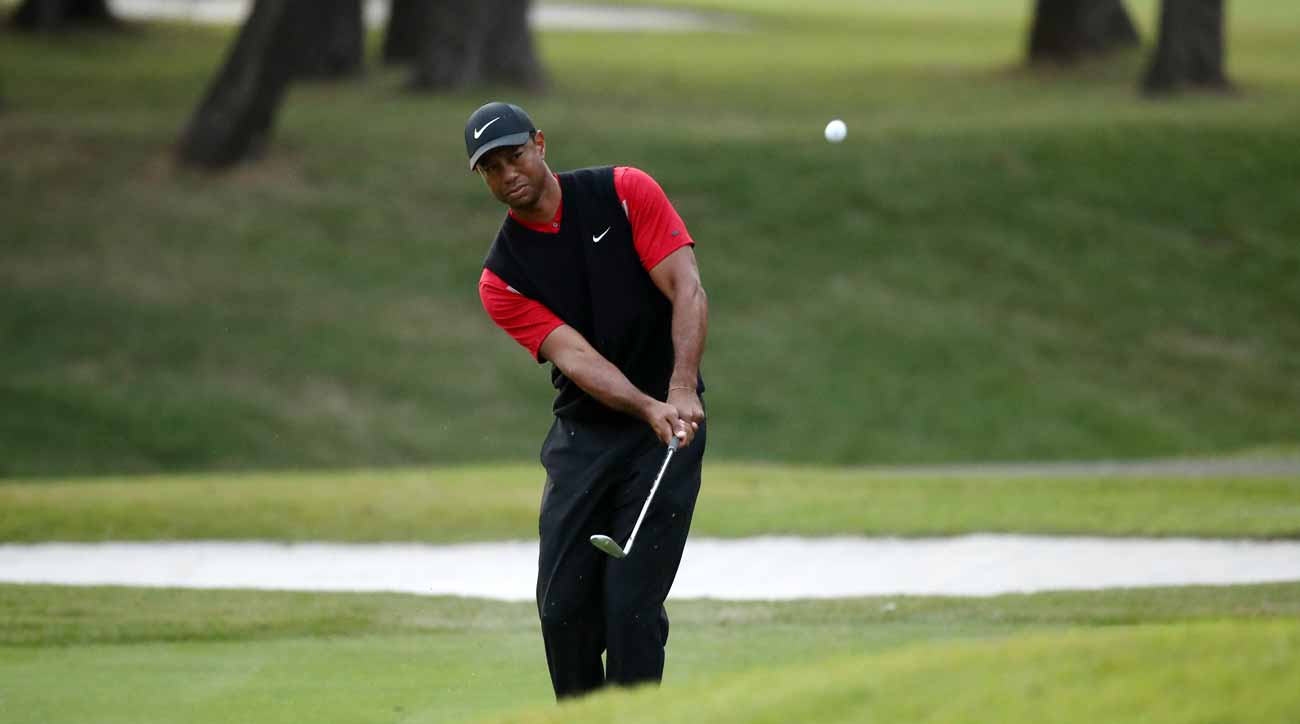
6. Adjust your ball position
For most shorter chips, your stance should be narrow and your ball position back slightly. You don’t have many options. But know that adjusting your ball position is a simple way of changing the trajectory of your shots.
A more centered ball position will eliminate some forward shaft lean at setup, and launch the ball a bit higher. A ball position that’s more back will do the opposite, launching it lower with more spin. Use this general guideline to adjust based on your shot at hand, and your own preferences.
7. Calibrate your distance control.
Once you have good, solid fundamentals, you need to lean to control your distance.
There are plenty of options when it comes to calibrating your distances. My preferred method is to learn one basic stroke size that you are really comfortable with, and to simply change the club. This will alter the distance due to changing flight-to-roll ratios.
An example:
My standard knee-height-to-knee-height chipping stroke with a gap wedge may travel 10 yards. With a pitching wedge, it’ll go 20 yards. A 9-iron may go 30 yards, 8-iron 40 yards and 7-iron 50 yards. The ball will fly lower as you go up in clubs, but the advantage of this system is that your stroke will stay consistent.

8. Practice with an alignment rod
A great test for your chipping setup is to practice with an alignment rod just outside your ball. If it does, your stroke could be moving too far from in-to-out, which could make it more likely you hit the heel of the club for the dreaded S-word: “Shank.”
9. Pick a target one-third away
It can be helpful to understand flight-to-roll ratios when chipping. For example, does your ball fly one-third of the distance, and then roll the other two-thirds? Or the opposite?
You can get an idea of this by placing a tee or golf club one-third of the way between your ball and the hole. Try to land your ball on that tee, and see how much it rolls afterward. If it lands on the tee but doesn’t reach the hole, try a different club.
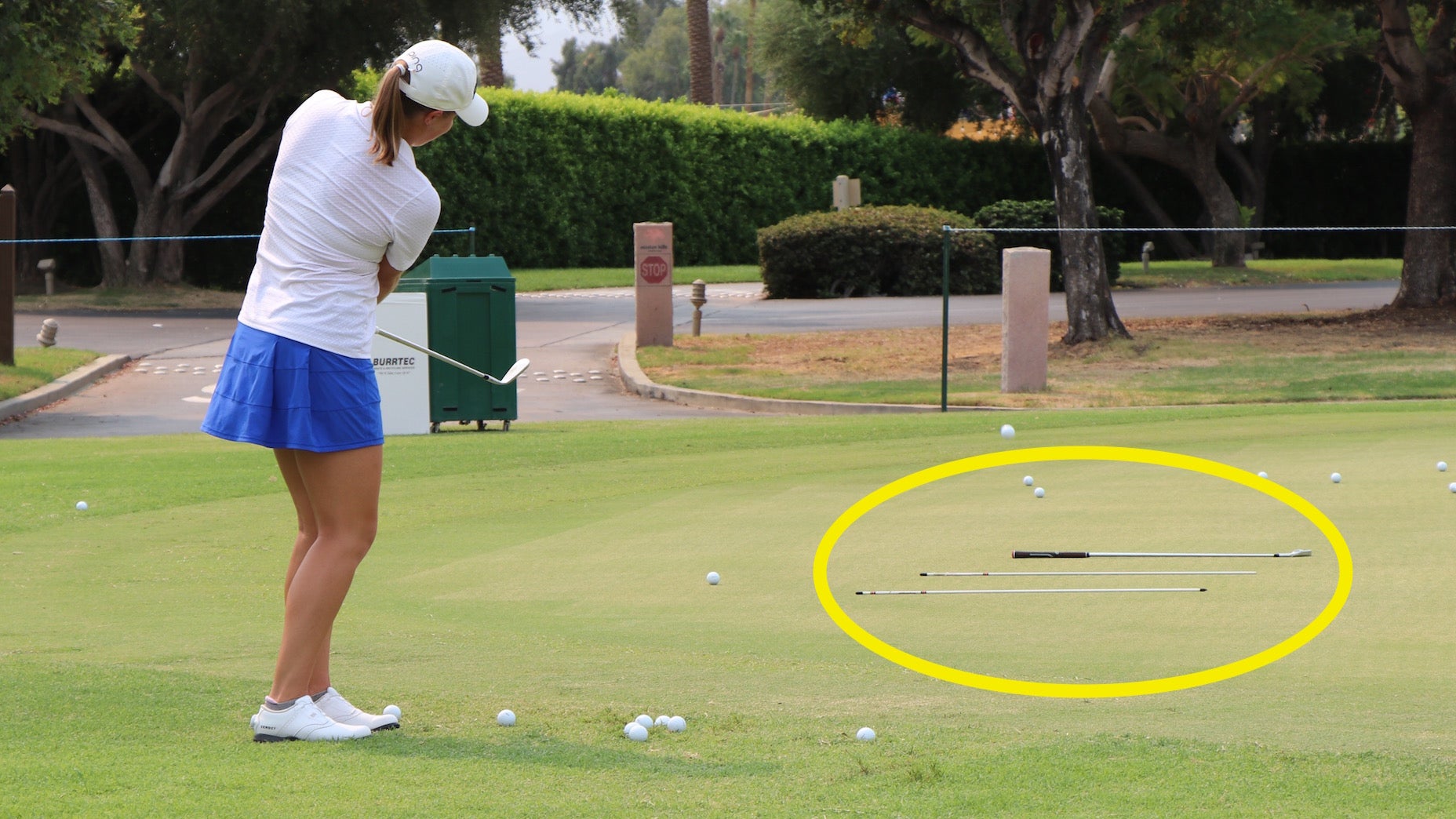
10. Include chipping in your warm-up
As you prepare yourself to take your best game to the course, it’s a good idea to hit a few chips and pitches
Even if it’s just warming up with a few chip shots on the driving range, it will help build that confidence when you get to the course, and give you that feeling of good contact.
One of the quickest ways to lower your scores is to be a great chipper. You don’t have to be big and strong and have the best swing to be a great chipper.
If you are a good chipper, and you miss the green, you have the confidence to make up for a missed shot.
If you are a good chipper, you take pressure off of your putting by being closer to the hole.
You can make this skill a great equalizer and lower your score and have more fun.



